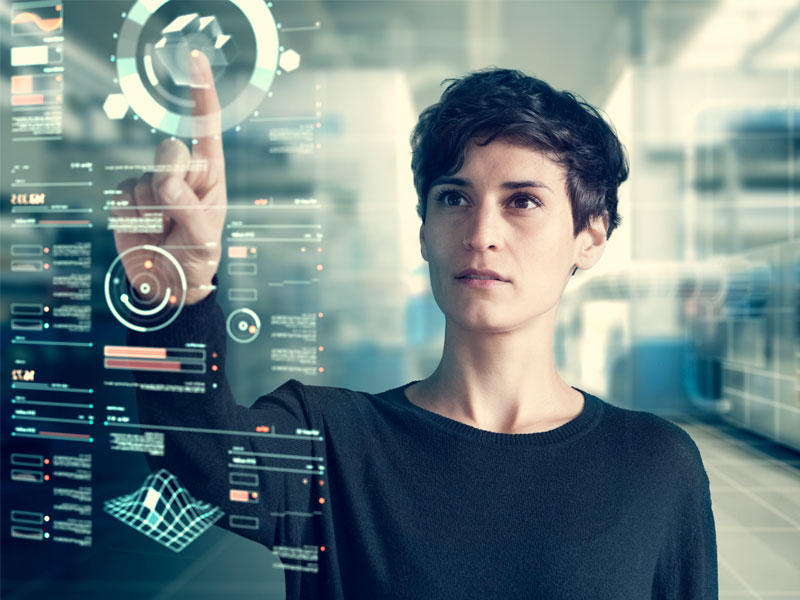Self-Learning in Customer Analytics: A Primer
March 15, 2019Self-learning is now a key marketing technology and a major trend for 2019 and beyond, according to Gartner. While self-learning technology may be neither widely recognized nor well-understood, the trend is already having a broad, burgeoning impact on marketing. This post serves as a self-learning primer, explaining what self-learning is and why Chief Marketing Officers (CMOs) need to care about it.
What is self-learning?
Put simply, self-learning helps any system get smarter over time, based on insights generated from collected data. It’s a key component of machine learning, which is a subset of artificial intelligence. All these terms refer to software that performs a particular function based on fixed rules, typically provided through an algorithm written by a human programmer.
In classical software development, the inputs or data that provide the foundation for the software are fixed, and so the rules are also fixed (by a human programmer). Machine learning systems are programmed/trained not by human programmers, but by the data the systems collect: this data, filtered through self-learning software, teaches the system to get smarter as more data is collected.
To illustrate, let’s look at one major challenge machine learning is tackling today: the maintenance of high tech industrial machinery (wind turbines, industrial robots, etc.). General Electric is as much a software company as an industrial company. Each piece of GE equipment has sensors attached that collect performance data from the equipment. All that collected data gets poured into self-learning software that “learns” how to maintain and optimize each piece of equipment. So GE’s high-tech equipment maintenance system, called Predix, is being “trained” to optimize its equipment in real-time with data provided by the equipment itself.
Self-learning should thus be seen as a software-enabled version of our cognitive skills. These self-taught systems have the ability to “learn” and adjust from aggregated data: they can grasp complicated concepts and gain insights from the data.
How does self-learning fit into machine learning systems?

It gets a bit “data science-y” here. All machine learning systems have three interrelated parts: (1) a model, which makes predictions; (2) parameters, which are the factors used by the model to inform its predictions/decisions; and (3) self-learning, which dynamically adjusts the parameters and the model by harmonizing differences in predictions versus actual outcomes.
The initial model, developed by a programmer, may be quite accurate/predictive (or not), but the self-learning software adapts the system over time according to how the model is performing in the real-world. Where there are gaps between what the model predicts and what actually happens, self-learning intervenes to dynamically adjust the model. Put simply, the system adapts based on the data it collects.
Why should CMOs and marketers care about self-learning?
Self-learning can be applied to the entire customer experience (CX) through a self-learning customer analytics platform, one that enables marketers to collect multi-channel data about the CX and dynamically tailor content delivery. Marketers can deliver relevant content by “learning” (1) where the customer is in their journey; (2) what behavioral factors drive that customer; and (3) what content they might need at each step along the way. Self-learning enables marketers to deeply understand customer behaviors, enrich customer profiles, make predictions about customer behaviors, map the entire CX, and then scale customer personalization and precision in ways that simply didn’t exist before. That’s powerful.
Self-learning can also help marketers identify new customer segments and create a more unified marketing and analytics system to constantly drive relevance and ROI. With the help of a self-learning customer analytics engine, marketers can truly influence purchasing decisions, drive upselling/cross-selling, and proactively enhance brand loyalty over time.
Finally, customer analytics provided by a self-learning system enable marketers to identify (and predict) areas where customers might be experiencing friction (i.e., places where your funnel is leaky and prospects are abandoning you), allowing marketers to respond proactively to improve customer engagement and conversion rates. With self-learning, your funnel becomes less leaky over time.
What’s the final takeaway here? You should think of a self-learning customer analytics platform as always delivering real-time signals (data) from your customers for you to drive enhanced CXs and revenues. Now if that isn’t relevant for CMOs and marketers, then nothing is.


